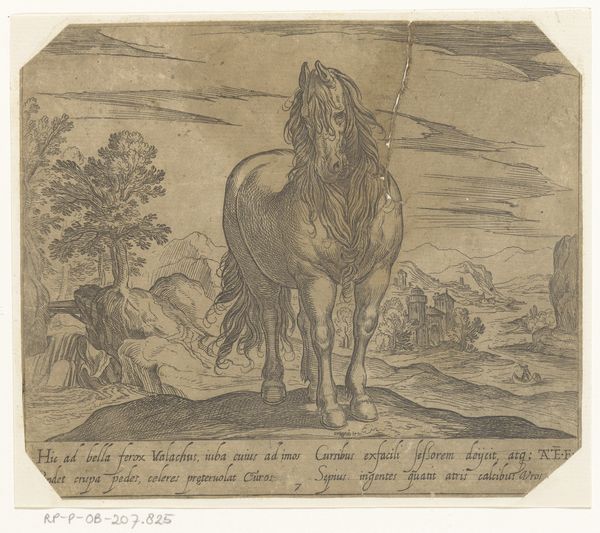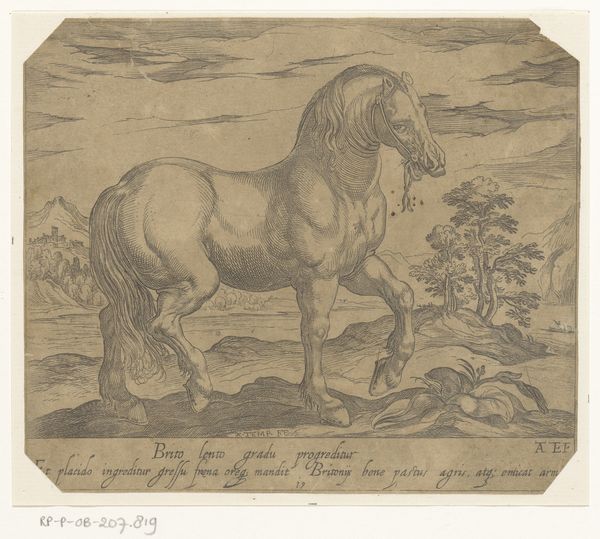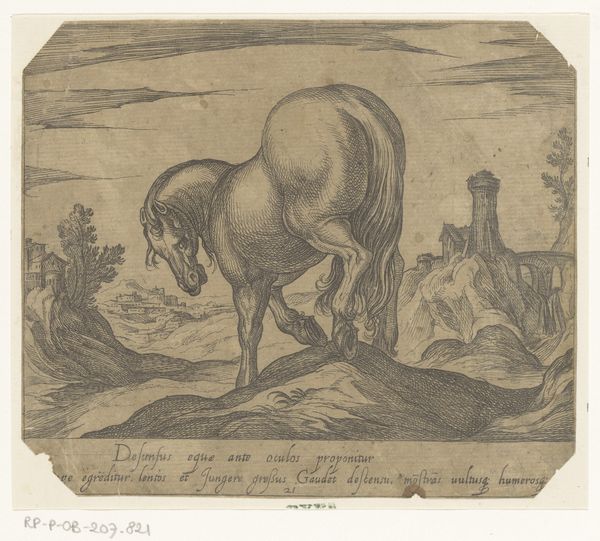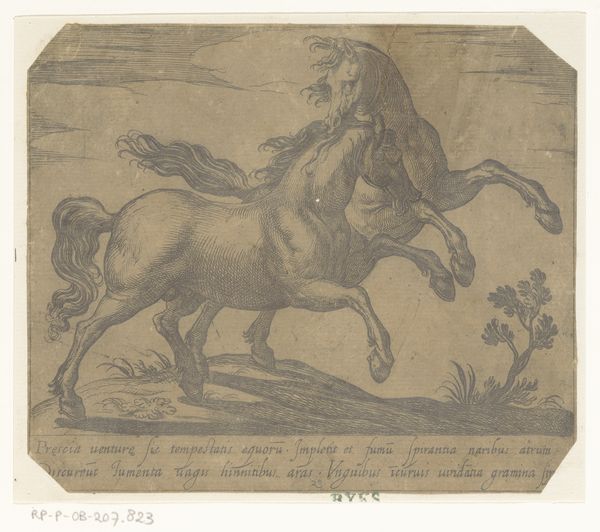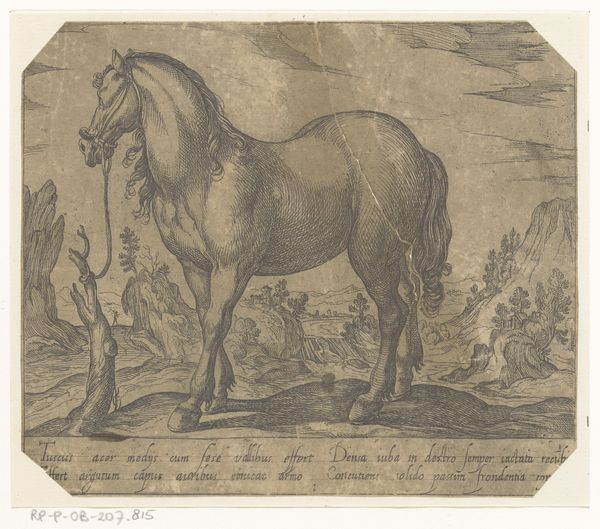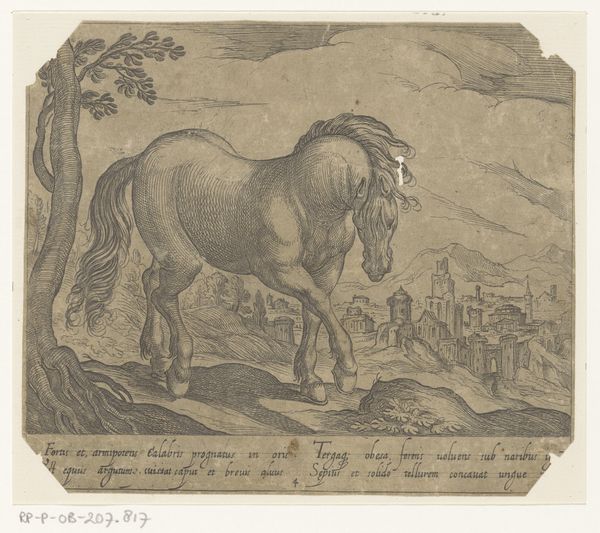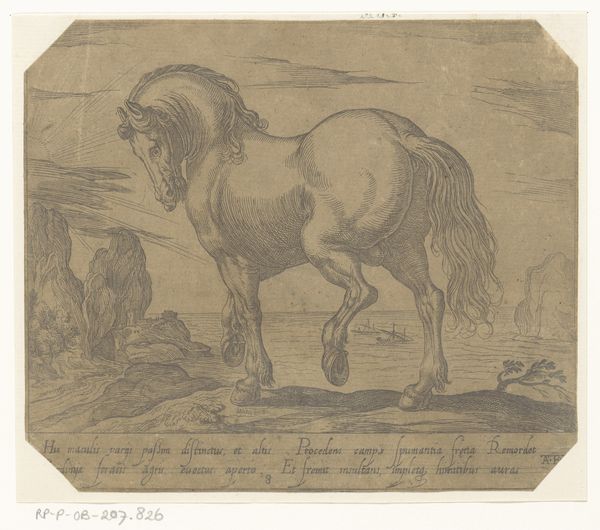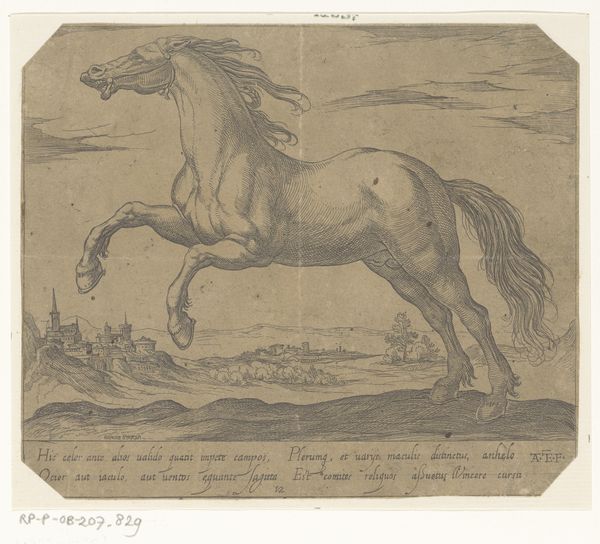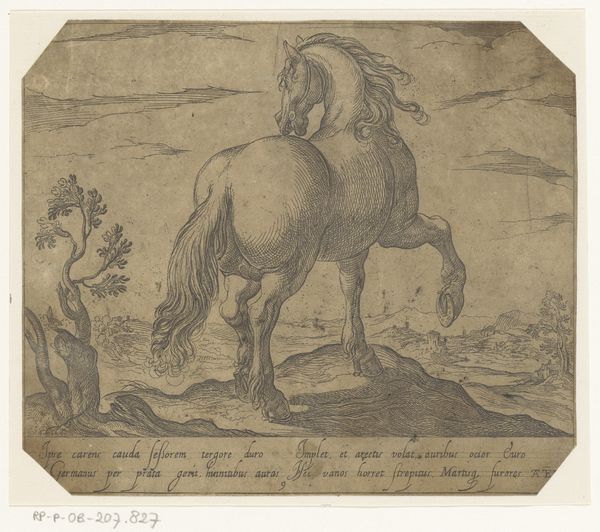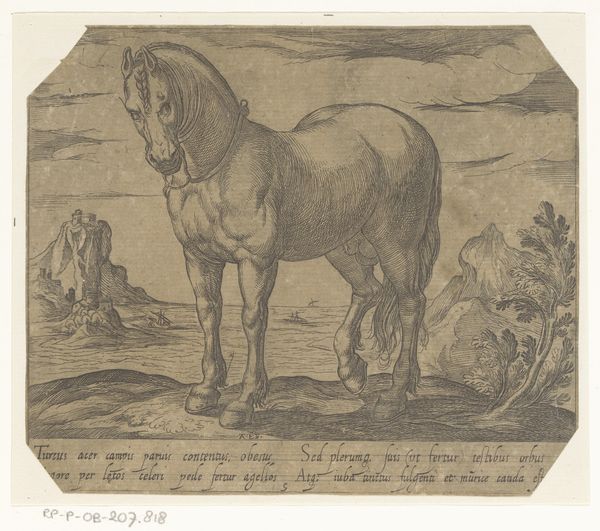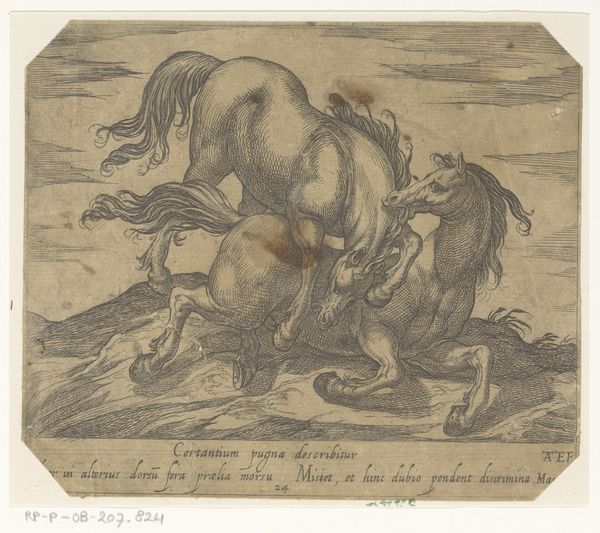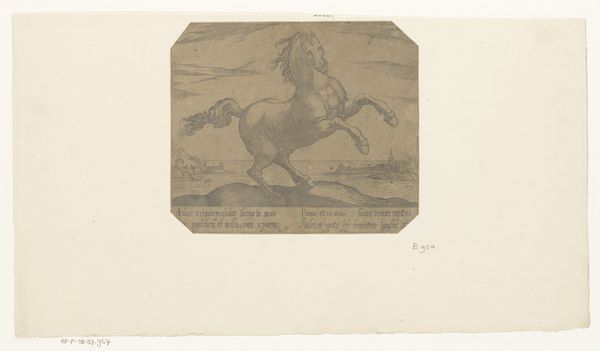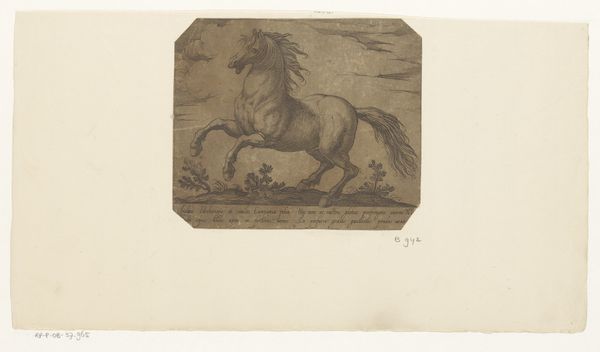
drawing, print, etching
#
drawing
#
baroque
#
animal
# print
#
pen sketch
#
etching
#
pencil sketch
#
landscape
#
figuration
#
horse
#
history-painting
Dimensions: height 141 mm, width 165 mm
Copyright: Rijks Museum: Open Domain
Curator: Look at this intriguing piece from the Rijksmuseum's collection. It’s a work by Antonio Tempesta, dating back to around 1590. Titled "Paard een heuvel afrennend, van achteren gezien," which translates to "Horse Running Down a Hill, Seen From Behind," it combines etching and engraving. What's your initial impression? Editor: Visually, I am struck by its starkness. The solitary horse dominates the composition, and the fine lines lend it an almost frenetic energy, conveying both movement and tension simultaneously. What symbolism might a fleeing horse hold in this period? Curator: Considering Tempesta's context, we see his influence across late Mannerism and early Baroque periods. Horses themselves frequently represent power, virility, and even unchecked passion. His series of prints was a valuable resource and was aimed for other artists, clearly inspired by battle scene art which at the time valorized militaristic strength and status through dynamic equestrian imagery, connecting individual prowess with broader social hierarchies and colonial expansion. Editor: The pose itself is quite peculiar – seen from behind as it charges down a slope, away from the viewer. There’s something inherently vulnerable in that exposed rear view, almost subverting the typically heroic representation of the animal. Perhaps it reflects a fear or vulnerability lurking beneath the surface of overt power, something that acknowledges those historically subjugated. Curator: Interesting. Horses frequently appear in classical mythology as well as Christian iconography to suggest concepts related to good and evil, salvation and perdition. We may assume Tempesta alludes to the fallibility of mankind. It definitely asks us to consider those deeper questions and social contexts woven into seemingly straightforward visual choices. The inscription too, might point us to a symbolic level beyond face value. Editor: The tail and mane appear blown by an invisible wind, and lend the impression of wild abandonment and untamed impulse. This might symbolize the conflict between rational and irrational forces or that inherent sense of rebellion. Curator: Exactly! And beyond its aesthetic merit, this work reflects the shifting social values and power dynamics of the era. That it still provokes such a lively conversation centuries later underscores its lasting impact. Editor: Indeed. It’s a stark, unsettling, yet endlessly fascinating piece, forcing us to look beyond the surface of established narratives.
Comments
No comments
Be the first to comment and join the conversation on the ultimate creative platform.
